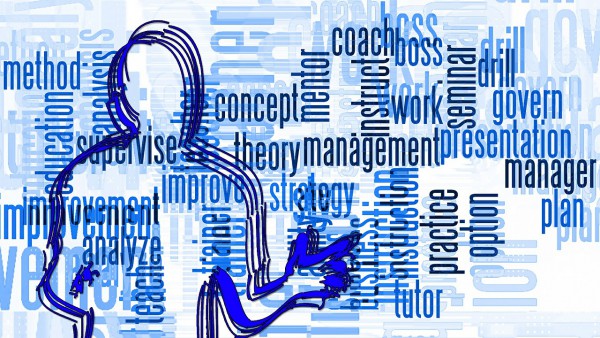Assistant engineer development
Dean Vaughan, Benchmark Yacht, provides a guide for chief engineers seeking to mentor their juniors…

Dean Vaughan is the founder and technical director of Benchmark Yacht. He has experience as a chief engineer on superyachts of 95m+ and as an owner's representative...
Workplace training and assessment is simply a phased work experience used to measure individual competence. It determines where knowledge, skill and procedural gaps exist so training plans can be created to unlock learning potential and raise standards. When crew competence improves, there is a huge increase in workplace harmony, productivity and safety standards.
Workplace training systems
1. Vessel orientation and competency reviews (record, retain and review information) begin on the day a new recruit arrives on board. These reviews aren’t casual chats, but are controlled conversations that guide people through material designed to capture basic information that keeps competence and confidence levels in sync. The key areas are: 1.1 Ability to collect and analyse information used to solve problems. 1.2 Ability to work alone, with others and within a team. 1.3 Attitude, aptitude and compliance. 1.4 Communication skills (oral, written and schematic). 1.5 Education, training and experience levels. 1.6 Language, numeracy and literacy. 1.7 Perceived competence and actual competence. 1.8 Planning and organisational skills. 1.9 Readiness to learn and teach others. 1.10 Strengths and weaknesses. 1.11 Systems, regulatory compliance and safety-management knowledge. 1.12 Use of tools and technology. 1.13 Watchkeeping and record-keeping skills.
Mentoring and training international crew
2. Treating people respectfully, supporting them throughout the learning process and compensating for language, cultural and socio-economic differences is essential for the following reasons: 2.1 It assures crew that you have their back when problems arise. 2.2 It clarifies information and reduces communication failures. 2.3 It enhances the learning process. 2.4 It strengthens relationships. 2.5 It encourages trainee feedback; giving people a voice helps refine the training process.
The leadership equation and material resources
3. Defining how leadership hierarchies work and providing people with material resources is critical because it keeps everyone pointing in the right direction and sets them up for success: 3.1 Leadership oversight. Rank, position and specialty determines whether or not people are authorised and qualified to perform certain activities or make decisions. For example, a junior engineer working on high-voltage circuits could be electrocuted because their confidence exceeded qualification and competence boundaries. There are three defining elements of leadership oversight: 3.1.1 Authority: empowerment to make decisions and give orders. 3.1.2 Responsibility: work within safety, operational and quality standards. 3.1.3 Accountability: accept the success and failures associated with their actions and the actions of others associated related to rank and specialty.
Enduring trainings highs and lows
4. The most difficult step in training is the first, and the most rewarding ones are the lightbulb moments that encourage people to progress. Trainers and trainees are only as successful as their efforts and willingness to endure the highs and lows of competency training.
Training system resources
5. Providing assistant engineers with a yacht-specific task book and basic tool kit is essential because it outlines the learning pathway and basic materials needed to perform tasks. Supplementing the vessel’s technical library and operational standards documents with ‘cheat sheets’ that explain tasks sequentially, and represent systems and processes visually, help people navigate through tasks, and these become reference guides.
Universal training elements
6. Superyachts are large complex machines filled with technology, and built, powered and classed according to displacement and the vessel’s operational qualities. Therefore, orienting new recruits and outlining standard training elements streamlines the learning process. Below are five universal skills elements that can be blended into yacht-specific task books which contain sign-off sheets as people work through the vessel systems, components and areas. 6.1 Locate and memorise system and component information. 6.2 Understand and explain system and component functions. 6.3 Operate machinery system correctly, and memorise safety and operational standards. 6.4 Maintain, repair and document work performed correctly to ensure parts inventories and maintenance systems are accurate. 6.5 Manage resources and continuously improve.
Setting goals, expiry dates and realising that failure is part of the learning experience
7. Setting goals: Self-pace learning works only when people are motivated, and this is precisely why clear goals need to be given to them. 7.1 Expiry dates: Everyone learns differently, and placing time limits on competency steps enables the trainer to determine when people have taken things as far as possible. Not everyone will be, or should become, a chief engineer and there’s nothing wrong with being a reliable assistant engineer who can handle routine work. 7.2 Realising that failure is always going to be part of the learning experience is essential. Apportioning blame benefits nobody because unforeseen circumstances, poorly delivered instructions and fatigue impact how well or poorly routines are executed.
Training the trainer
8. In 2004, I completed a course that certified me as an adult trainer, and use these skills every day on the yachts I manage. Leadership and training done well benefits everyone, from the yacht’s owner right down to the most junior crewmember, and getting more people to realise this has been one of my greatest goals.
The crew I work with today are from virtually everywhere, so language and cultural barriers add a few more twists. But these types of barriers simplify things because communication is more fundamental. And showing that you are willing to learn their language and make efforts to help really builds the connection.
NEW: Sign up for SuperyachtNewsweek!
Get the latest weekly news, in-depth reports, intelligence, and strategic insights, delivered directly from The Superyacht Group's editors and market analysts.
Stay at the forefront of the superyacht industry with SuperyachtNewsweek
Click here to become part of The Superyacht Group community, and join us in our mission to make this industry accessible to all, and prosperous for the long-term. We are offering access to the superyacht industry’s most comprehensive and longstanding archive of business-critical information, as well as a comprehensive, real-time superyacht fleet database, for just £10 per month, because we are One Industry with One Mission. Sign up here.
Related news

A sea change
Jenny Matthews, founder of She of the Sea, discusses gender balance in the superyacht market
Crew
Related news
A sea change
7 years ago
NEW: Sign up for
SuperyachtNewsweek!
Get the latest weekly news, in-depth reports, intelligence, and strategic insights, delivered directly from The Superyacht Group's editors and market analysts.
Stay at the forefront of the superyacht industry with SuperyachtNewsweek



